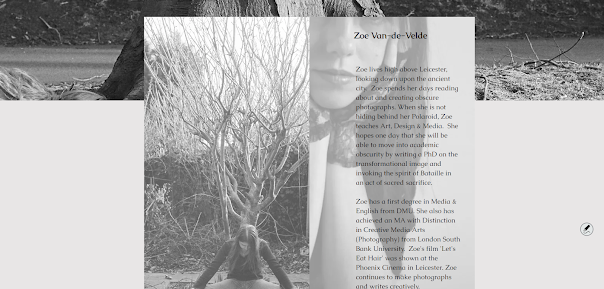As I have started to plan my work, I now have a clear idea of the direction I would like to take on my project. I will be creating the stages of women in photographs and I intend to do this through staging images using classical paintings for the setup and poses and using a Barbie doll as the woman throughout. I have ordered the first dols that I want to use and a photographic light box to stage the images.
Looking at artists who have used thsi subject, I will begin with Gustav Klimt Three Ages of Woman (1905). 'The painting shows a little girl in the protecting arms of a young woman, while beside them an old woman stands with bowed head. The aged crone is symbolic of the passage of time' (Gustav.Klimt.com 2011). This painting is also borrowed from classical paintings, the old woman is borrowed from Auguste Rodin's The Old Courtesan (1901). This painting wraps the subjects in the bright coloured patterns which is often seen in Klimt's work and the women are placed closely together to create a unified whole, a circle of life.

The second painting I wanted to consider was Edvard Munch's The Dance of Life (1899). 'This picture, appears to be a more complex and personalized version of Woman in Three Stages, with an innocent woman in white on the left, a sensual woman dancing with the man, and an anguished woman in black on the right. All three resemble Tulla Larsen; the girls dancing in the background may also represent her. The man in the foreground appears to be Munch.' (The Dance of Life 1899 by Edvard Munch n.d.)
The younger version in this image looks on as if seeing the future as she becomes a woman sensual and desirable and the older woman looks back as if remembering when she was young and vibrant. It is interesting that in both images as a woman gets older they become unimportant, wizened, and no longer desirable in any way, invisible and fading. In Klimt the older woman is a crone and in Munch's a sad figure who now is alone. These images show that a woman is only really seen when she is young, pretty and at reproductive age, once we fade and no longer can produce children or are desirable society starts thinking we have nothing to offer. In our jobs, we work harder to prove we are worthy and able as still as we hit menopause our judgment can be questioned.
In the third image, here is a Victorian portrait of a woman's stages in life. In this image; '11 chronological stages of virtuous womanhood (with the 30's evidently considered to be the peak years), each accompanied by a descriptive verse couplet.' (Kelloggs & Comstock 2006)
The couplets for the stages of woman here are as follows:
An approximate transcription of the verse couplets in the image (some of the words are quite hard to read):
1) Infant in cradle:
"A wailing infant, first she plays,
Unconscious of her future days."
2) Young girl with doll:
"Her girlish pastimes reveal for show
The cares which woman's life must know."
3) Late teen girl in grownup clothes:
"Her ripened beauty all confess
And wonder at her loveliness."
4) Bride in white dress and veil:
"A husband's arms, in hope and pride,
"Enclasp her now, a lovely bride."
5) Young mother holding baby:
"A mother's anxious love and care
With toilful heart is hers to share."
6) Dressed to go outdoors (i.e. now that she no longer has babies or toddlers in the house, she can now take an interest in matters outside the home — though in a strictly private and individual charitable capacity, of course):
"Now to the poor her hands dispense
the blessings of benevolence."
7) Middle-aged woman (first declining step):
"Absorbed in household duties now,
The weight of toil contracts her brow."
8) In black bonnet and holding handkerchief (suggesting the latter stages of mourning, perhaps her husband has died):
"She now resigns all earthbound care
And lifts her soul to heaven in prayer."
9) Old, wearing spectacles:
"At eighty years, her well-stored mind
"Imparts its blessings to her kind"
10) Bent over, using cane:
"The hoary head, us all should bless,
Who abound in ways of righteousness."
11) Sitting in chair, knitting:
"The body sinks and wastes away,
The spirit cannot know decay."
Vignette under arch: Funeral scene.
As can be seen here as soon as she becomes middle ages (i.e.in her 40s) this is described as the first declining step, she then waits for death as she, apparently after her husband dies, has no earthbound care.
Interesting to look at these images as it helps me to explore my ideas about how I will show these stages of a woman through these photographs, I want to use a classical pose but I would like to add a more contemporary and feminist take on the stages, perhaps a more optimistic one!
References
The Three Ages of Woman, 1905 by Gustav Klimt (2011) The three ages of woman, 1905 by Gustav Klimt. Available at: https://www.gustav-klimt.com/The-Three-Ages-Of-Woman.jsp (Accessed: November 9, 2022).
The Dance of Life, 1899 by Edvard Munch (no date) The dance of life, 1899 by Edvard Munch. edvardmunch.org. Available at: https://www.edvardmunch.org/the-dance-of-life.jsp (Accessed: November 9, 2022).
Kelloggs & Comstock (2006) File:11-stages-womanhood-1840s.jpg - wikimedia commons, Wikimedia Commons. Wikimedia. Available at: https://commons.wikimedia.org/wiki/File:11-stages-womanhood-1840s.jpg (Accessed: November 9, 2022).





























